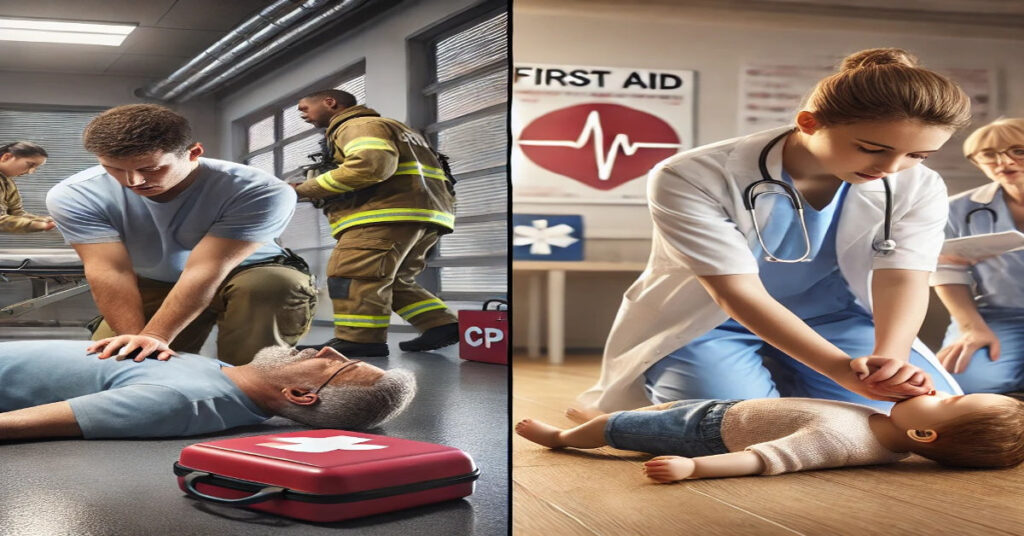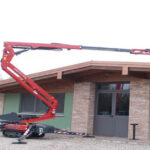First aid is a critical skill that can mean the difference between life and death in medical emergencies. However, emergency first aid and paediatric first aid differ significantly due to the anatomical, physiological, and psychological differences between adults and children. The way a child’s body reacts to injury is vastly different from that of an adult, requiring specialized knowledge and techniques.
According to the British Red Cross, 59% of deaths from injuries could have been prevented with timely first aid intervention. However, a study by the Royal Society for the Prevention of Accidents (RoSPA) found that while 90% of adults feel confident helping another adult in an emergency, only 30% feel confident providing first aid to a child. This highlights the importance of paediatric-specific training, especially for parents, teachers, and childcare providers.
This article explores the key differences between emergency first aid and paediatric first aid, why these distinctions matter, and how to get the right training to handle emergencies effectively.
1) Differences in Anatomy and Physiology
One of the primary reasons paediatric first aid differs from general emergency first aid is that children are not just small adults—their bodies function differently, making medical responses unique.
Airway and Breathing Differences
- A child’s airway is smaller and more delicate, making it more prone to obstruction.
- Babies and toddlers have larger tongues relative to their airway size, increasing the risk of choking.
- Infants are obligate nose breathers for the first few months of life, meaning nasal congestion can cause severe breathing difficulties.
- According to the National Health Service (NHS), choking is one of the leading causes of accidental death in children under five, with over 4,000 UK hospital admissions per year due to choking incidents.
Circulatory System Differences
- Children’s hearts beat faster than adults’ (newborns: 120-160 bpm vs. adults: 60-100 bpm).
- Their blood volume is significantly lower (an adult has 5-6 liters, whereas a child has only about 2 liters).
- Shock develops faster in children due to lower blood reserves.
Statistics:
A study in the Journal of Pediatric Emergency Medicine found that children in shock deteriorate 50% faster than adults, emphasizing the need for rapid intervention in paediatric emergencies.
Head Injuries and Bone Structure
- A child’s head is proportionally larger than their body, making them more prone to head injuries.
- Their bones are softer and more flexible, meaning fractures may not always be visible but can still cause internal damage.
- The NHS reports that falls are the most common cause of non-fatal injuries in children, accounting for 50% of all child hospital admissions.
2) Differences in CPR (Cardiopulmonary Resuscitation) Techniques
Cardiac arrest in adults and children often results from different causes, requiring a distinct approach to CPR (Cardiopulmonary Resuscitation).
CPR for Adults (Emergency First Aid)
- Primary cause of cardiac arrest: Heart disease or sudden cardiac failure.
- Chest compression depth: 5-6 cm (2-2.5 inches).
- Compression-to-breath ratio: 30 compressions to 2 breaths.
- Rescue breaths: Less emphasis (hands-only CPR is recommended for untrained responders).
CPR for Infants and Children (Paediatric First Aid)
- Primary cause of cardiac arrest: Lack of oxygen (e.g., choking, drowning, respiratory infections).
- Chest compression depth: 4 cm for infants, 5 cm for children.
- Compression-to-breath ratio: 15 compressions to 2 breaths (to prioritize oxygen supply).
- Rescue breaths: Highly essential, as oxygen deprivation is the main cause of arrest.
Statistics:
A study by the European Resuscitation Council found that bystander CPR improves survival rates in children by 74%, but less than 40% of parents feel confident performing it.
3) Differences in Managing Choking
Choking First Aid for Adults
- Use the Heimlich maneuver (abdominal thrusts).
- Stand behind the person, place hands above the navel, and thrust inward and upward.
- If the person becomes unconscious, begin CPR immediately.
Choking First Aid for Infants and Young Children
- Do NOT perform abdominal thrusts on infants under one year old—this can damage internal organs.
- Instead, use 5 back blows followed by 5 chest thrusts.
- Support the baby face-down on your forearm, deliver 5 firm back blows between the shoulder blades, then turn them over and give 5 gentle chest thrusts.
- According to the Child Accident Prevention Trust (CAPT), 40% of parents do not know the correct way to help a choking baby, making paediatric first aid training essential.
4) Recognizing and Managing Shock
Shock is a life-threatening condition where vital organs don’t receive enough oxygen.
Shock in Adults
- Often caused by severe bleeding, heart attacks, or dehydration.
- Symptoms: Rapid pulse, pale skin, confusion, cold sweats.
- Treatment: Lay the person down, elevate their legs, and seek medical help.
Shock in Children
- Can be triggered by even minor blood loss or dehydration.
- Early signs include irritability, rapid breathing, and drowsiness—often overlooked in young children.
- Immediate action is crucial, as children deteriorate faster than adults.
The World Health Organization (WHO) states that untreated shock is the leading cause of preventable paediatric deaths, with a 45% higher fatality rate in children than adults.
The Importance of Getting First Aid Training
Given the stark differences between adult and paediatric emergencies, specialized training is essential for parents, caregivers, teachers, and first responders.
- Emergency First Aid at Work (EFAW) is legally required for many workplaces under the Health and Safety (First Aid) Regulations 1981.
- Paediatric First Aid (PFA) is mandatory for childcare providers in the UK under Ofsted and EYFS guidelines.
- Only 10% of UK parents have formal paediatric first aid training.
- 85% of nurseries and schools now require at least one staff member to have paediatric first aid certification.
For those looking for professional first aid training, consider getting first aid training near Stoke on Trent, which offers recognized courses covering both adult and paediatric first aid.
Conclusion
Understanding the differences between emergency first aid and paediatric first aid can save lives. While both focus on preserving life, preventing worsening conditions, and promoting recovery, their approaches differ significantly based on anatomy, causes of medical emergencies, and treatment techniques.
Paediatric emergencies require specialized knowledge—from modified CPR techniques to recognizing early signs of shock and choking in infants. By ensuring more people are trained in both emergency and paediatric first aid, we can create a safer environment for both adults and children alike.







